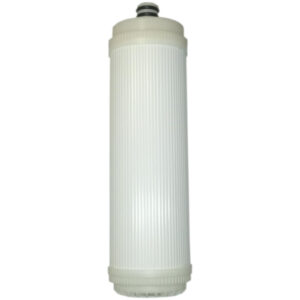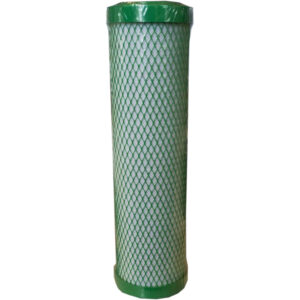Rainwater solutions
Rain or Heavenly water is given to us in abundance, approx. 900L/m2 per year.
On a roof you can easily collect between 50 and 90,000L per year (so you can save that much on your drinking water)
We can do anything with it, of course for the plants or the garden,
but also, thanks to microfiltration*, make it suitable for the home for toilet, washing machine and even drinkable water from the tap.
It’s very soft and clean.
A rainwater solution for your situation:
Tiny Houses
Residence
Businesses
Showing 1–12 of 18 results
-
Tiny rainwater tank incl accessories 1500 liters
€1.645,00Original price was: €1.645,00.€1.495,00Current price is: €1.495,00. Bekijk product -
1 Sky-Rainwater tube filter, super fine
€99,46Original price was: €99,46.€94,95Current price is: €94,95. Bekijk product -
flat rainwater tank incl accessories 3000 liters
€2.185,00Original price was: €2.185,00.€1.895,00Current price is: €1.895,00. Bekijk product
Can I use rainwater in my home or business?
Yes, after careful filtering (4x) the water is clean enough to use in your home or business. Usually it is used to supply the largest drinking water wasters. Such as the toilet (15,000L per person per year) and the washing machine.
But with microfiltration it can also be made so clean and pure that it is also drinkable water.
Is there enough rainwater?
There is a year between 800L and 900L per m2 of roof surface, which is a lot.
With a roof of approx. 100m2, that is already approx. 90,000L of rainwater per year.
But that does not fall gradually but nowadays more often in heavy downpours.
So a larger tank is smart to cope with drought and heavy showers for longer, and this is often not much more expensive.
What do you save with rainwater?
A lot of drinking water for which no drinking water is actually needed, such as the toilet and the washing machine. You can save up to 60-70% of drinking water.
Will my toilet or laundry be cleaned with rainwater?
Of course, after 4 important filtering steps* the water is definitely clean to use and looks clear. It is also very soft, almost no lime, so you also have to use much less detergent.
* 4 filter steps:
- leaf separator in the drainpipe,
- Stainless steel collector filter for the tank provides clean water in the tank
- the fine filter in the pump,
- Then the 5-phase microfiltration in the house ensures clean and safe rainwater in the house.
Is there a subsidy for rainwater use?
Yes, depending on the municipality or province, you can receive a subsidy of €5 to €10 per m2 if you disconnect rainwater from the sewer system. This also has its advantages, namely during downpours the sewer network will overflow less quickly.
The other intentions are also to use much more rainwater itself and to infiltrate excess rainwater into the soil, so that groundwater is replenished.
How can I save even more drinking water?
First of all, you can equip all your taps with a 50% saving aerator. You get 50% less water from the tap but with more air and more than enough to rinse or something. A (luxury) water-saving shower saves you about 50% drinking water and energy (of the hot water) and absolutely still very comfortable and nice shower. Finally, with a dry toilet you no longer use any water at all to flush that pee of approx. 100ml with 6-9L at a time. Thanks to built-in ventilation you don’t smell anything and thanks to the valves you don’t see anything. Then together you save 100% drinking water.
A dry toilet is a type of toilet that does not use water to drain the stool. Instead, the faeces are processed in a different way, such as via composting or incineration.
A compost toilet uses a special kind of bacteria to break down the faeces. This process ensures that the faeces are eventually converted into compost, which can then be used as fertilizer for gardens and plants.
Yes, dry toilets are environmentally friendly as they do not use water and do not release waste into water treatment systems. In addition, the compost or ash produced by the toilet can be reused as fertilizer for plants.
Yes, dry toilets are environmentally friendly as they do not use water and do not release waste into water treatment systems. In addition, the compost or ash produced by the toilet can be reused as fertilizer for plants.
Yes, many people do this because they save a lot of money. Regular toilets use 6 to 8 liters of water per flush, while a dry toilet uses no water. This saves you a lot of money.
How a compost toilet works
Ecosave marine toilets work in a unique way to be efficient and use less water than traditional marine toilets. Our toilets are equipped with a vacuum system that sucks away the waste and stores it in a waste-holding tank. This vacuum system has several advantages.
First, the vacuum system uses less water than traditional marine toilets. This reduces the amount of wastewater your boat produces and reduces your carbon footprint.
Secondly, the vacuum system ensures less odor and fewer blockages. Because the waste is immediately sucked away, there is less chance of blockages or odor problems.
Finally, our vacuum system is easy to maintain and clean. The waste-holding tank can be easily emptied and the toilet can be easily cleaned using the cleaning agents supplied.
In short, the operation of Ecosave marine toilets is very effective and offers a sustainable solution for ship owners looking for a more efficient and environmentally friendly toilet.














